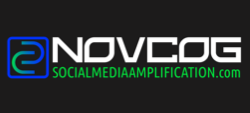
Freelance work really came of age in 2020 for two obvious reasons.
Many people lost their jobs due to COVID-19 and needed a way to make money. Naturally, people took their talents to the freelance market and began building their client lists.With the acceleration of remote work, people have more time on their hands, which allows them to focus on side projects and freelance work outside of their main professions.More people are expected to dip their toes into freelance work in 2021. In fact, 68% of remote workers said they would explore freelancing amid the pandemic. The same study from Fiverr also found that more companies are now open to do business with freelancers than before the pandemic.
It’s a ripe time to begin your social media freelance career, but how do you get started? For those with little-to-no freelancing experience under their belts, this article is for you.
Bonus: I personally surveyed some freelancing pros for this article and asked for their best tips for freelancing newcomers. You’ll find them quoted below.
Getting started as a freelancer
To kickstart your career, you’ll likely need prior experience before seeking out clients. For this reason, I highly recommend updating your resume, but more importantly, your portfolio. Clients will request work samples prior to signing with you.
They’ll want to see your work in action: which social media accounts you managed, which campaigns you executed, and believe it or not which campaign management tools you used. If they learn of a new tool you used to save time and money for one of your past clients and they see how it might impact their bottom line you might have a leg up over other freelancers they’re considering hiring. Your portfolio will give them this opportunity.
How do you get started with a portfolio? Freelancing professional Rebecca Reynoso says “Get active online. Your LinkedIn and Twitter aren’t enough. Your resume isn’t enough. You need a website to promote yourself and your services and to showcase your accomplishments.”
Some free and freemium website builders to help you get started include Squarespace, Wix, Weebly, and Webflow. These builders have easy-to-use templates and drag-and-drop capabilities, making them great options for beginners.
Where to look for freelancing opportunities
With a website built and your portfolio on display, it’s time to look for work. Freelancing professional Devan Ciccarelli says platforms like ProBlogger and We Work Remotely are good ways to get your foot in the door. Upwork, Toptal, and SimplyHired are other options that can help you get up-and-running quickly.
An example of a freelance social media manager’s profile on UpWork
With a little work under your belt, you can begin expanding your options for finding new opportunities. For example, Reynoso says Google is where she found her first opportunity, but after sharing her work on LinkedIn, people began messaging her and other opportunities arose.
Freelancing professional and co-founder of Peak Freelance, Elise Dopson, had some tactical advice for getting in front of new clients as a writer: “Guest blog on the sites your target client is reading,” she said. “You’re doing the thing you want people to hire you to do. Plus, you can get some awesome “featured in” bylines to work as social proof. Potential clients might be more likely to hire you if they see editors at well-known publications have published your work.”
Marketing yourself as a freelancer
Great freelancers aren’t just good at what they do, they’re also good at marketing themselves and creating a flywheel of new opportunities. One of the best ways to market yourself as a social media freelancer is, of course, to get active on social media.
“Tweet about what you do, what you’re good at,” says Reynoso. “But not the same generic stuff everyone posts. Post your opinions, but base them on facts and experiences. Get your name out there and start building a personal brand.”
Dopson agreed with Reynoso. She said Twitter is great for finding other freelancers in the industry and start connecting with them.
You can go the informal, more bold route and start marketing yourself with a viral edge. For example, this man printed his CV on a cereal box and sent it to prospective employers, and to his surprise, it went viral. This strategy could pay off if you’re seeking clients for social media work, as it displays you’re not afraid to take risks.
If you want to go the more formal route, you can begin prospecting on LinkedIn and connect with industry leaders directly to nurture those relationships. Many freelancers now sell their service on Instagram DM.
Don’t discredit face-to-face networking, either. With the pandemic, utilizing a virtual phone system for voice and video conferencing is a great way to take relationships off social media and personalize them. When normalcy returns, meet clients at local coffee shops or for lunch to discuss future projects.
Relationship-building is key when it comes to freelancing. It helps potential clients discover your work, but it also helps to legitimize your expertise in a certain industry. These are all simple but effective ways to gain exposure.
Tips for staying organized
So, you have a client list and some projects underway, but how are you managing this workload? If you’re struggling to stay organized, you could fall behind on deadlines and end up hurting your freelance reputation.
One of the best ways to stay organized is to look into a project management tool where you can create dedicated project boards for each client. For Dopson, her go-to tool is Asana. “Each piece I write goes through the same workflow,” she said. “In Asana, you can create a daily to-do list based on each of those subtasks. I know exactly what I’m working on each day, and the overall deadlines I need to meet.”
An example of how a project board would look like in Asana
Ciccarelli also recommends going with a time tracking tool for managing your time spent on client work and for holding yourself accountable for taking breaks. It can be used to accurately and efficiently track the time you spend working on client projects and bill your clients when it comes to invoicing. Many of these tools have free or inexpensive options for freelancers.
Pay negotiation and contract writing
You’re making headway in your social media freelance career and new clients are discovering you. You have the tools to keep you organized and manage your income. Speaking of income, what are you charging your clients? How are you negotiating your pay? Are these negotiations bound by a contract?
A challenge for any self-employed person is payment negotiation, especially for those with only a handful of projects in their portfolio. However, Reynoso says to aim higher than you expect to be paid.
“A good rule of thumb is to ask for at least $10 over your going rate so when they shoot you down $10, you can accept a rate you were already shooting for, to begin with,” she said. “And if they try to pay you way under market price, share external source materials to show what the standard going rate is.”
Helpful tip: Think of your payment structure. Will you bill hourly, daily, monthly, per project, or go with a different format? Find what works best for you and your clients. Another challenge for self-employed people is making sure they get paid on time. In this case, you’ll want to make sure your social media freelancing contract agreements are airtight. If you don’t know how to write a contract, there are tons of templates available online and you can customize them accordingly.
“The biggest benefit of creating your own contract is that you know exactly what each line means,” said Dopson. “You don’t need legal-speak or jargon. I’d recommend working with a legal consultant on a custom contract that covers yourself and is easy to understand.”
This is a great tip, as consultants know exactly which elements of a contract protect you legally and ensure your invoicing goes smoothly.
Helpful tip: Invoicing can be difficult if you’re new to billing clients. I’d consider going with some invoicing templates to make this process easier.
Final thoughts
Whether you lost your job during the pandemic or have extra time for side projects while working from home, 2021 is a great year to kickstart your social media freelance career. Just remember these tips:
When getting started, make sure you get your portfolio online for clients to see. Even a one-page website works in your favor. Then, hit the freelancing platforms to dip your toes into small projects. Don’t forget to market yourself on social media and build relationships with prospective clients.Stay organized and be sure to keep a timesheet. There are free and inexpensive tools for each of these tasks.Get a freelancing contract that holds yourself and your clients accountable for your work. This also ensures you get paid the right amount on time.The post Ultimate Guide to Being a Social Media Freelancer in 2021 (+Advice from Freelancing Pros) appeared first on Social Media Explorer.
Did you miss our previous article...
https://socialmediaamplification.com/social-media-analysis/how-to-be-a-responsible-parent






